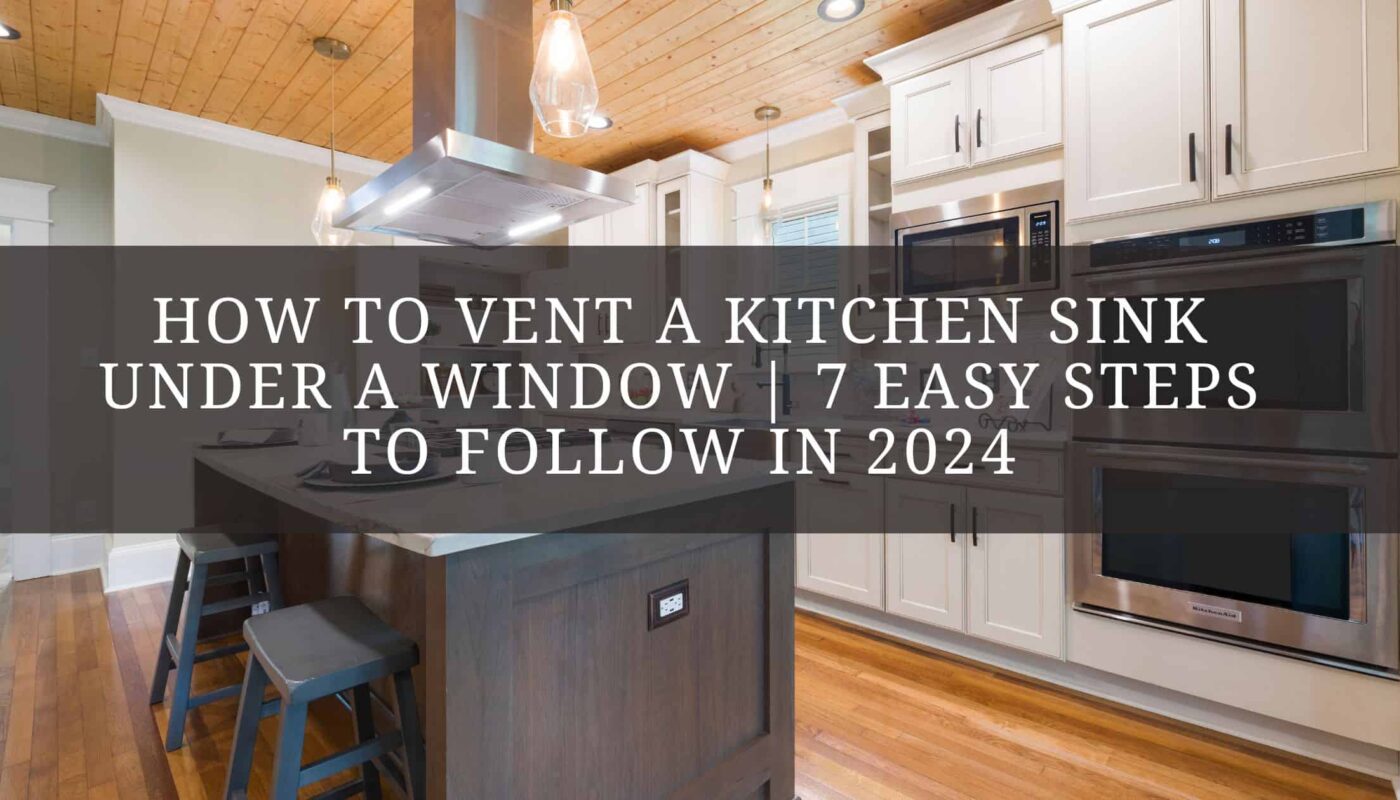Table of Contents
Introduction
Welcome to our comprehensive guide on how to vent a kitchen sink under a window. Proper ventilation is crucial for maintaining a healthy and functional kitchen environment. Whether you are renovating your kitchen or building a new one, understanding the best practices for venting your kitchen sink under a window is essential. In this guide, we’ll provide you with detailed steps and expert insights to ensure your kitchen ventilation is not only effective but also meets the highest standards.
Assessing Your Kitchen Layout
Before we get into the nitty-gritty details, let’s take a good look at how your kitchen is set up. It’s important to understand where your sink is placed and how close it is to the window. Why? Because if you want your kitchen to have good airflow and work well, you need to plan things out carefully. So, basically, before we start, let’s make sure we know where everything is in your kitchen!
Choosing the Right Ventilation System
Selecting the Vent Hood
To start venting your kitchen sink under a window, the first thing you need to do is pick the right ventilation system. We often go for something called a vent hood. These are well-liked because they’re really good at getting rid of smells, steam, and greasy stuff. When you’re selecting one, go for a vent hood that not only matches how your kitchen looks but also does a great job at making sure the air in your kitchen stays fresh and clean. It’s like choosing an appliance that not only works well but also looks good in your kitchen! How to vent a kitchen sink under a window
Positioning the Vent Hood
Getting the placement of the vent hood right is super important. What you want to do is install it right above your kitchen sink. Why? Because this spot is perfect for grabbing and getting rid of any smells hanging around. When the vent hood is directly above the sink, it does a great job of pulling away steam and anything else that comes from cooking. This smart placement makes sure your kitchen always smells fresh and cooking doesn’t leave any lingering odors. It’s basically about putting it in the best spot for a top-notch kitchen vibe!
Ventilation Duct Installation
Calculating Duct Size : How to vent a kitchen sink under a window
Making sure the duct size is just right is super important for a ventilation system that really works. Here’s what you need to do: calculate the size your duct should be based on how big your kitchen is and how powerful your vent hood is. Why does this matter? Well, when your duct is the right size, it makes sure air flows perfectly. This not only keeps things fresh but also stops any nasty stuff from building up. So, it’s like finding the Goldilocks size for your duct—just perfect for a clean and efficient airflow.How to vent a kitchen sink under a window
Routing the Duct
Now, let’s talk about how the duct should travel. Take your time and think through where the ventilation duct should go. Specifically, when you’re venting a kitchen sink under a window, go for the shortest, most straightforward path to push air outside. Why? Because a direct route is like the expressway for the air to escape, keeping things efficient. Avoid making the ductwork too complicated—simplicity is key here. Complex paths can slow down the airflow, making the system less effective. So, aim for a clear and direct journey for that air to find its way out. How to vent a kitchen sink under a window
Ventilation System Maintenance
Regular Cleaning Routine
It’s super important to keep your ventilation system spick and span for it to work at its best. To make sure it’s always performing top-notch, set up a regular cleaning routine. This means not only giving the vent hood a good clean but also paying attention to the ducts. Why? Well, over time, grease can build up, and that’s not good for efficiency. Plus, it can even become a fire hazard. So, by sticking to a routine and keeping things clean, you’re making sure your ventilation system stays in tip-top shape, doing its job properly without any hiccups. Consistent maintenance is the key to a safe and efficient kitchen setup. How to vent a kitchen sink under a window
Inspection and Repairs
Here’s the deal—keep an eye on your ventilation system regularly. Look out for any signs that things might be wearing out or getting damaged. If you spot anything like loose connections, damaged ducts, or if the vent hood isn’t working like it should, don’t wait around. Get on it promptly! Fix those issues right away. Why? Because making repairs in good time is like giving your system a longer life. It guarantees that your setup keeps running smoothly without any glitches. So, by staying vigilant and dealing with problems ASAP, you’re ensuring your ventilation system stays efficient and reliable in the long run. How to vent a kitchen sink under a window
Compliance with Building Codes
Familiarizing Yourself with Local Regulations : How to vent a kitchen sink under a window
Before you kick off any ventilation project, take some time to get to know the local building codes and rules. Why? Because following these rules is a big deal—it’s all about making sure your kitchen ventilation system is safe and works the way it should. Check out the regulations in your area and make sure your project ticks all the right boxes. And here’s the thing: if you’re ever unsure or need some expert advice, don’t hesitate to reach out to professionals. Getting their input ensures that you’re sticking to the standards and doing things right. So, before you start, get familiar with the local guidelines and make sure your kitchen ventilation project is on the straight and narrow. How to vent a kitchen sink under a window
Conclusion : How to vent a kitchen sink under a window
In conclusion, proper ventilation for a kitchen sink under a window is a multifaceted process that involves careful planning, appropriate equipment selection, and regular maintenance. By following these comprehensive steps, you can create a kitchen environment that is not only aesthetically pleasing but also promotes a healthy and enjoyable cooking experience.




